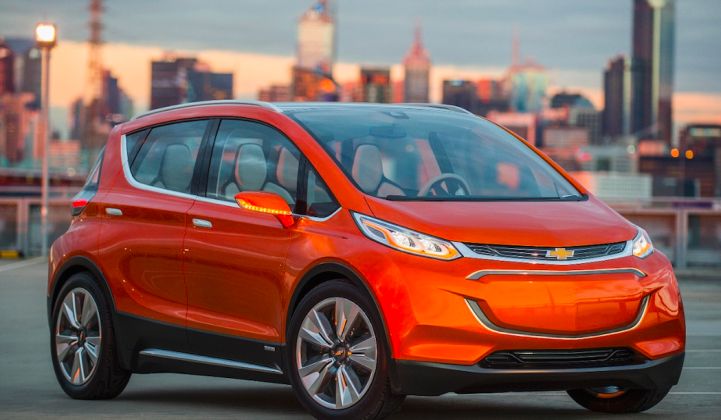A high penetration of renewables has started to cause resource-planning issues for some states, such as California and Hawaii. Not only do grid operators have to prepare for a spike in electricity usage in the late afternoon, they also have to account for negative pricing and potential over-generation in the late morning and early afternoon -- an issue commonly known as the duck curve.
Electric vehicles (EVs), if managed properly, could offer a solution.
The increasing complexity on the grid caused by renewables has created the need for more flexible resources. A recent set of reports from GTM Research identify EVs as an important part of the integrated resource planning process with the ability to mitigate duck curve issues.
“The EV market is moving toward minimizing its impact, and actually producing some positive feedback for the grid,” said Timotej Gavrilovic, analyst at GTM Research and author of the EV reports.
In part one of The Impact of Electric Vehicles on the Grid, GTM Research found that EVs could help with over-generation. In an analysis of EV impacts on the duck curve in California, the report states “assuming current charging behavior from the base-case scenario, without additional action taken by utilities, EVs could have reduced over-generation risks by 0.2% to 0.4% in 2015 and by 1.5% to 1.7% in 2020.”
The analysis looked at current charging behavior, matched that with the projected the number of EVs in 2020, and then mapped the outcome to the hours of the day that impact the duck curve. During the belly hours, any charging that takes place would be decreasing demand, and thus helping resolve the duck curve issue.
“I think that is significant,” said Gavrilovic. “1.5 percent is by no means a negligible percentage, given that it’s a niche in the overall energy market, which is residential transportation.”
“EVs are one technology in the demand-side management toolbox,” he added.
In an additional analysis, Gavrilovic found that if more extended range EVs come to market and there’s more public fast charging on the grid system, it could nearly double the amount of demand during the duck belly hours.
The story is not all positive, however. The base-case analysis found that “without additional charging-behavior management, EVs will have contributed to the afternoon ramp by 0.3% in 2015 and by up to 1.6% in 2020,” the report states. “Planned charging can have a significantly larger effect on over-generation, with impacts as high as 5%, assuming a managed per-EV load of 7 kW.”
To have any kind of impact on the grid, good or bad, EVs have to reach scale. Assuming adoption meets expectations, utility rate programs and energy management technologies stand to play a significant role in shifting the EV load to other, grid-beneficial hours -- either during the middle of the day or at night.
“I think the overall impact is going the be the flattening of the duck curve, but the extent to which that happens depends on how well the whole process is managed, and whether these players that are emerging in the market are going to be more or less successful,” said Gavrilovic. The players include companies like eMotorWerks or ChargePoint.
In part two of The Impact of Electric Vehicles on the Grid, GTM Research examined how EVs stand to flatten the duck curve on the Hawaiian island of Oahu, using data from a collaboration between the Hawaii Natural Energy Institute and General Electric Energy Consulting.
Given the island’s mix of renewable resources, without EVs, 10 percent to 23 percent of combined solar and wind energy needed to be curtailed. With EVs, there’s a potential to reduce renewable curtailment by 18 percent to 46 percent, depending on charging behavior.
“This broad range indicates the importance of impacting charging behavior so that it provides support to the grid,” according to the report.
Also, high EV penetration rates of 10 percent to 30 percent are also necessary for EVs to become a curtailment-reduction resource. In Oahu that would mean 65,000 to 200,000 vehicles need to be electric for there to be significant curtailment reductions. When compared to the 3,000 EVs currently on the island (0.5 percent penetration), the penetration requirement seems very high, according to the GTM report.
“Scale is hugely important,” said Gavrilovic.
Projections show there could be as many as 16 million EVs in California alone by 2025. Last year was a slow one for EV sales, but that would change as new models, such as the Tesla Model 3, come to market.
“I don’t see a trend that’s going to be pushing the market down,” said Gavrilovic. With adequate demand-side planning and active load management, greater EV adoption could prove to be a significant supporting mechanism for overall grid stability.



